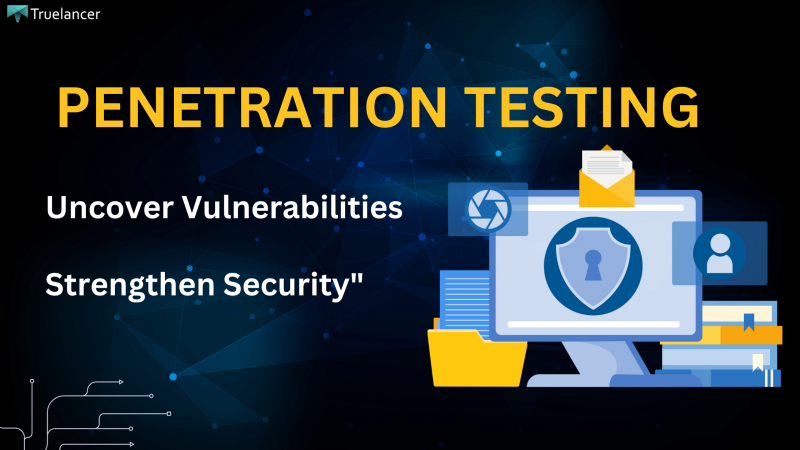Hackers Paradise: Exploring the World of Penetration Testing
Introduction
In our ever-evolving digital landscape, cybersecurity is paramount. As businesses increasingly depend on technology, the threat landscape evolves as well. That’s where penetration testing, a vital cybersecurity practice, comes into play. In this article, we delve into the realm of penetration testing, unveiling its purpose, process, and significance.
What is Penetration Testing?
Penetration testing, often referred to as pen testing, is a proactive cybersecurity approach that simulates real-world cyberattacks on a computer system, network, or application to evaluate its security. The primary goal is to identify vulnerabilities before malicious hackers can exploit them.
Penetration testing helps organizations identify and mitigate security risks by uncovering vulnerabilities before they can be exploited. It assesses the effectiveness of security measures, raises security awareness, and supports compliance efforts.
The Penetration Testing Process
Preparation Phase
Before conducting a penetration test, thorough preparation is essential. This phase includes scoping the test, setting clear goals, and obtaining necessary permissions from stakeholders. A well-defined scope ensures that the testing remains focused and aligned with organizational objectives.
Information Gathering
The information gathering phase involves collecting data about the target system, such as IP addresses, domain names, and network configurations. This data is critical for planning the penetration test effectively. Open-source intelligence (OSINT) plays a vital role in this phase, as it provides publicly available information about the target.
Vulnerability Analysis
Once information is gathered, the next step is to identify vulnerabilities. Penetration testers use various tools and techniques to scan the target system for weaknesses. Common methods include network scanning, vulnerability scanning, and manual testing.
Exploitation
In the exploitation phase, testers attempt to exploit identified vulnerabilities in a controlled and ethical manner. This simulates how a real attacker might breach the system. Successful exploitation provides valuable insights into potential security gaps.
Post-Exploitation
After exploitation, testers assess the extent of the potential damage and further probe for vulnerabilities that might not have been apparent initially. This phase helps organizations understand the full scope of their security issues.
Reporting
The final step involves documenting findings and preparing a comprehensive report for stakeholders. The report should include an executive summary, a technical breakdown of vulnerabilities, risk assessments, and actionable recommendations for improving security.
Types of Penetration Testing
There are three main types of penetration testing:
Black Box Testing
In black box testing, the tester has no prior knowledge of the target system. This approach simulates a scenario where the attacker has no insider information. It is valuable for assessing the system’s resilience against external threats.
White Box Testing
White box testing is the opposite of black box testing. Testers have full knowledge of the target system, including its internal architecture, code, and configurations. This method allows for a comprehensive assessment of the system’s security.
Gray Box Testing
Gray box testing combines elements of both black box and white box testing. Testers have partial knowledge of the target system, which reflects real-world scenarios where some insider information may be available.
Penetration Testing Tools
Penetration testers rely on various tools and software to perform their tasks effectively. Some popular penetration testing tools include:
Nmap: A powerful network scanning tool.
Metasploit: A widely used framework for developing and executing exploits.
Wireshark: A network protocol analyzer.
Burp Suite: A toolkit for web application security testing.
These tools assist in information gathering, vulnerability assessment, and exploitation during penetration testing.
Real-World Examples
Penetration testing has been instrumental in uncovering vulnerabilities and enhancing cybersecurity in real-world scenarios. One notable example is the penetration testing conducted on a major e-commerce platform. Testers identified a critical vulnerability in the payment processing system, preventing a potential data breach and saving the company millions.
Challenges and Ethical Considerations
Legality
Penetration testing is legal, but it must be conducted responsibly and with proper authorization. Organizations should obtain explicit consent from the system owners before conducting penetration tests to ensure compliance with legal and ethical standards.
While penetration testing is a valuable practice, it comes with its challenges and ethical considerations. Testers must navigate legal boundaries, obtain proper permissions, and ensure responsible disclosure. Additionally, they often encounter resistance from organizations hesitant to uncover vulnerabilities that could tarnish their reputation.
Conclusion
In conclusion, penetration testing is a critical component of modern cybersecurity strategies. By simulating real-world attacks and identifying vulnerabilities, organizations can proactively strengthen their defenses. While it comes with challenges, the benefits far outweigh the risks. Implementing penetration testing can help protect sensitive data, safeguard customer trust, and secure the digital frontier in an increasingly interconnected world.
Ready to Secure Your Digital Assets?
If you’re concerned about your organization’s cybersecurity or want to explore penetration testing services, look no further. Truelancer connects you with a diverse community of skilled cybersecurity experts ready to assess and fortify your digital defenses.
Secure Your Site with Truelancer Today!
Connect with certified penetration testers who ensure a transparent process, legal compliance, and expert protection for your digital assets. Find the right skills for your project. Hire Freelancer
